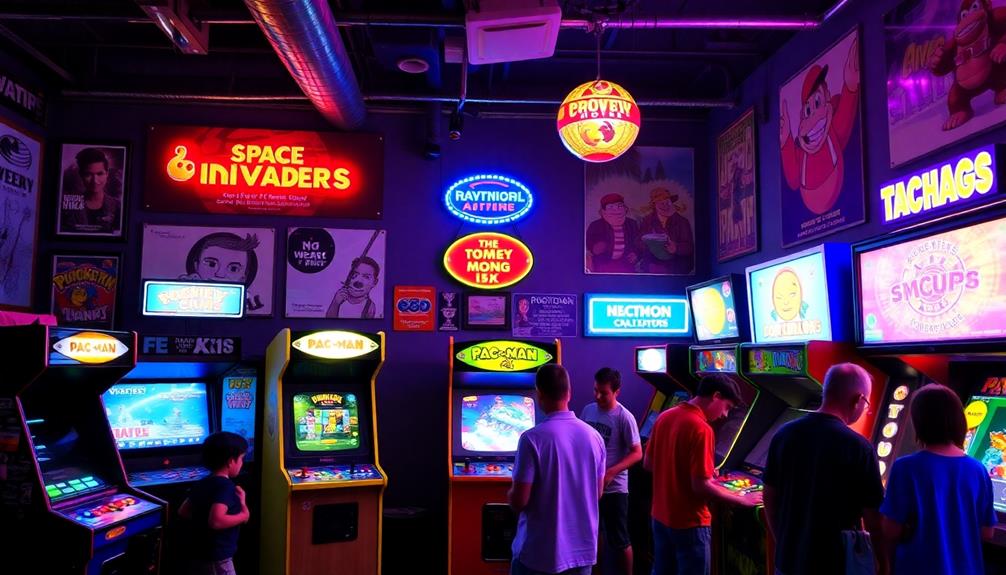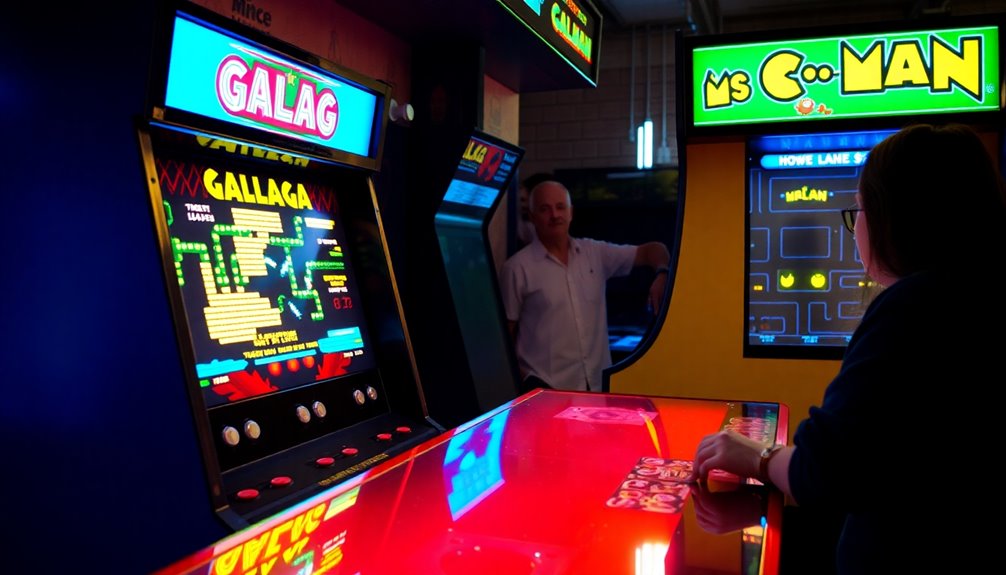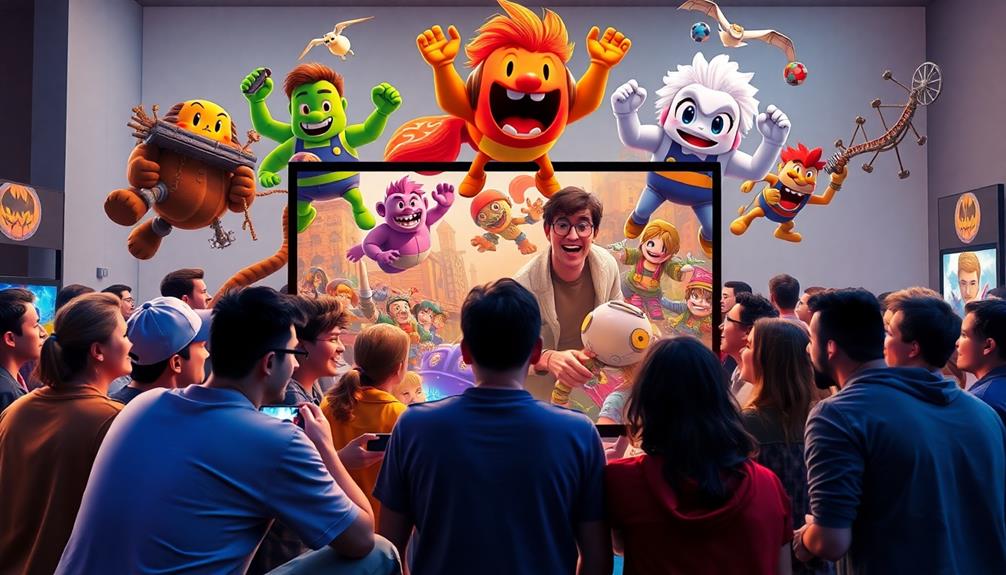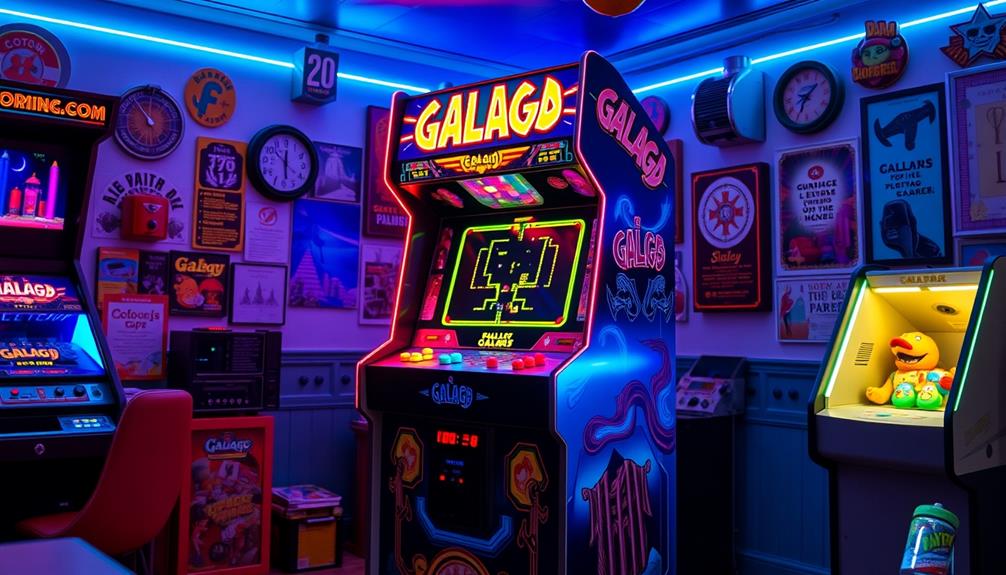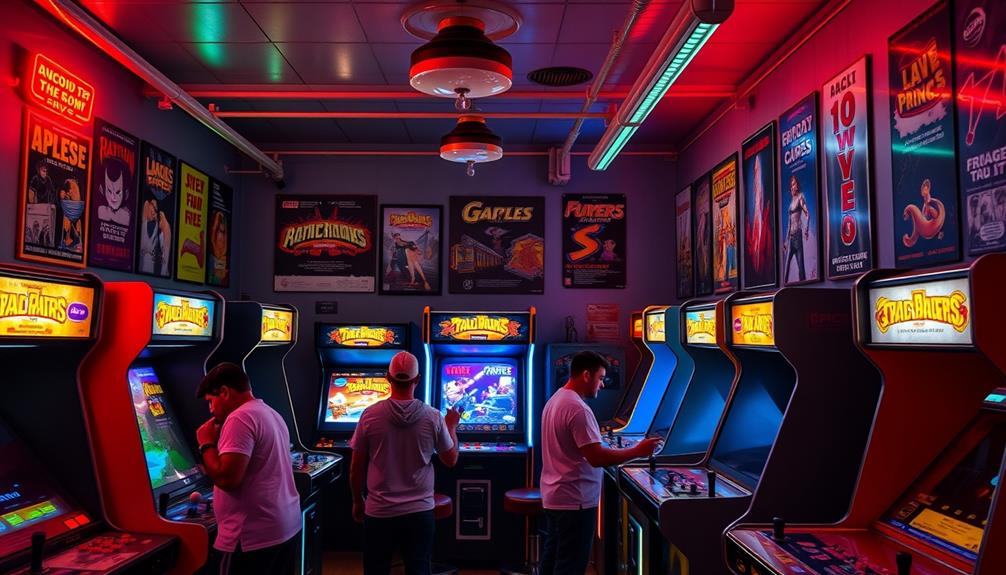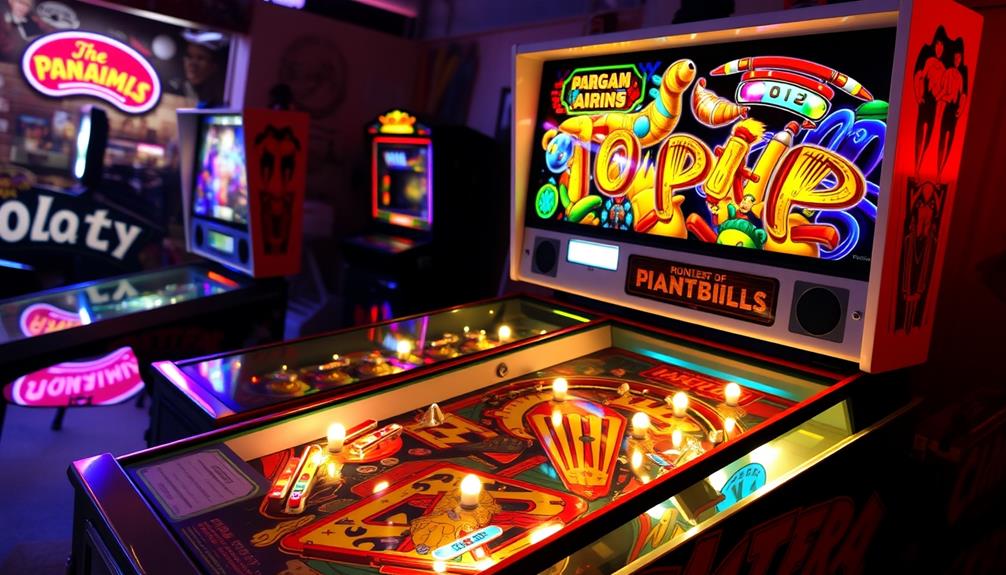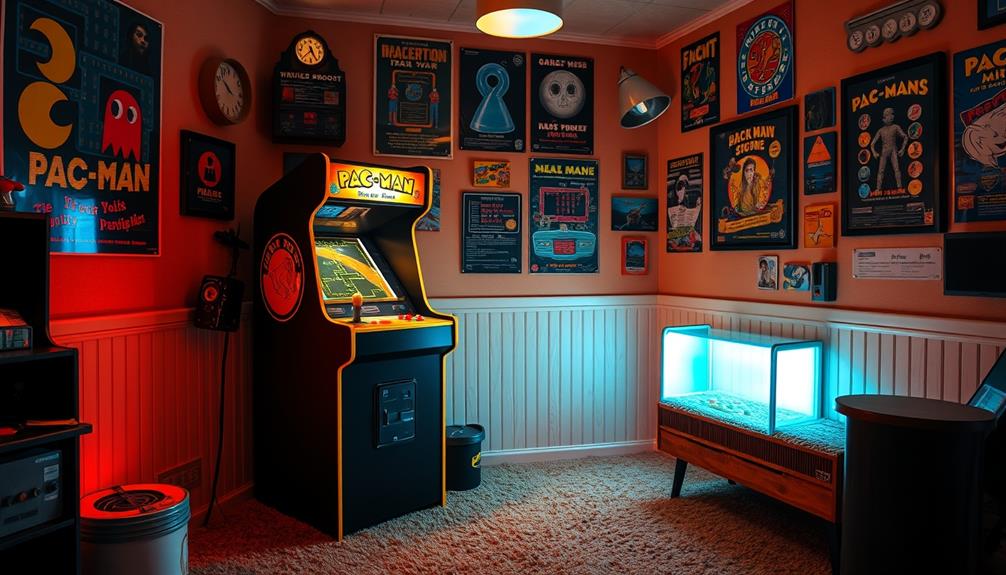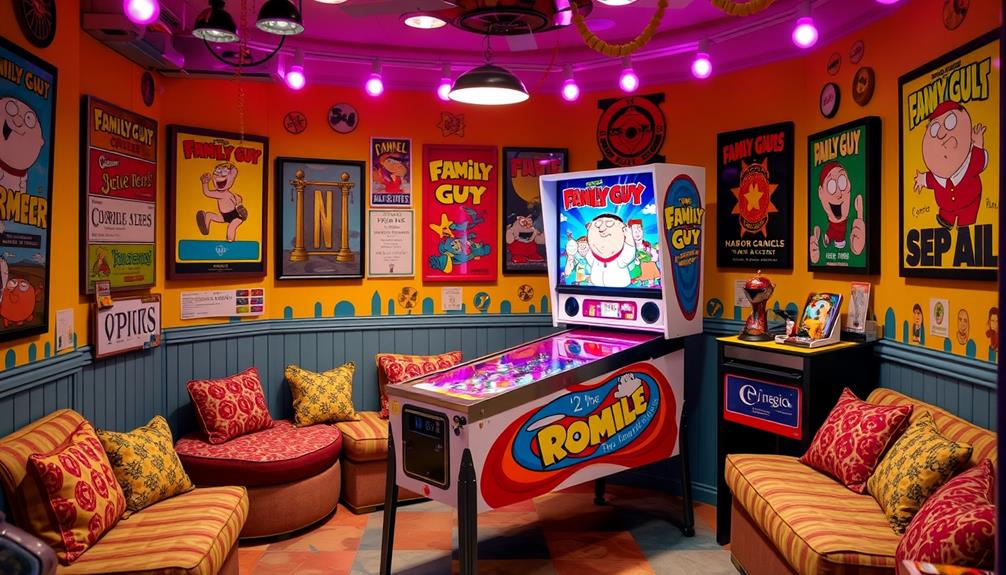Arcade games can pose several drawbacks that may impact your overall enjoyment. One major issue is the pay-per-play model, which can lead to high costs for gameplay. In addition, there is typically a limited selection of games at arcades compared to what home consoles offer, making each visit feel repetitive. Time constraints can also be a factor, as arcade hours are often limited. Furthermore, the graphics and hardware may not meet expectations, lacking the depth and complexity of modern gaming systems. If you are interested in learning more about how these factors can affect your gaming experience, there is more to delve into.
Key Takeaways
- High cumulative costs from pay-per-play fees can diminish overall enjoyment and accessibility for casual players.
- Limited game selection restricts player choices, often leading to repetitive gameplay experiences.
- Time constraints imposed by the pay-per-play model hinder extended gaming sessions and exploration of new titles.
- Social interaction is limited, focusing on brief competitive play rather than collaborative experiences among friends.
- Hardware and graphics restrictions result in less immersive gameplay compared to modern home gaming consoles.
Cost Implications of Arcade Gaming
When you step into an arcade, you mightn't realize how quickly costs can add up. Each arcade game typically charges a fee per play, usually ranging from 25 cents to $2. If you enjoy regular gameplay, these charges can accumulate considerably, making your visits more expensive than owning a home console.
The cost implications of arcade gaming shouldn't be overlooked, especially if you're someone who likes to immerse yourself in multiple games during a single outing. Additionally, with the average price of arcade machines ranging from $300 to $3,000, best arcade machines can be a considerable investment for enthusiasts looking to set up their own game rooms.
Moreover, the pay-per-play model often places you under time constraints. You might find yourself rushing through games, trying to maximize your enjoyment within a limited budget. This can lead to a less satisfying gaming experience, as the pressure to play quickly detracts from the fun.
Additionally, the initial investment for arcade machines is quite high, with new units costing between $2,000 and $10,000. This high price tag limits accessibility for casual players, further complicating the cost dynamics of arcade gaming.
As a result, while arcades can offer thrilling experiences, it's crucial to recognize how the financial aspects can impact your overall enjoyment. For instance, the cost of tokens or credits can add up quickly, especially if you are not careful with your spending. It’s important to balance the excitement of playing arcade games with the practical consideration of how much money you are willing to invest. However, it’s also important to acknowledge the benefits of playing arcade games, such as improving hand-eye coordination and quick decision-making skills. These benefits can certainly add value to the overall experience, but it’s essential to approach arcade gaming with a mindful approach to finances.
Limited Game Selection
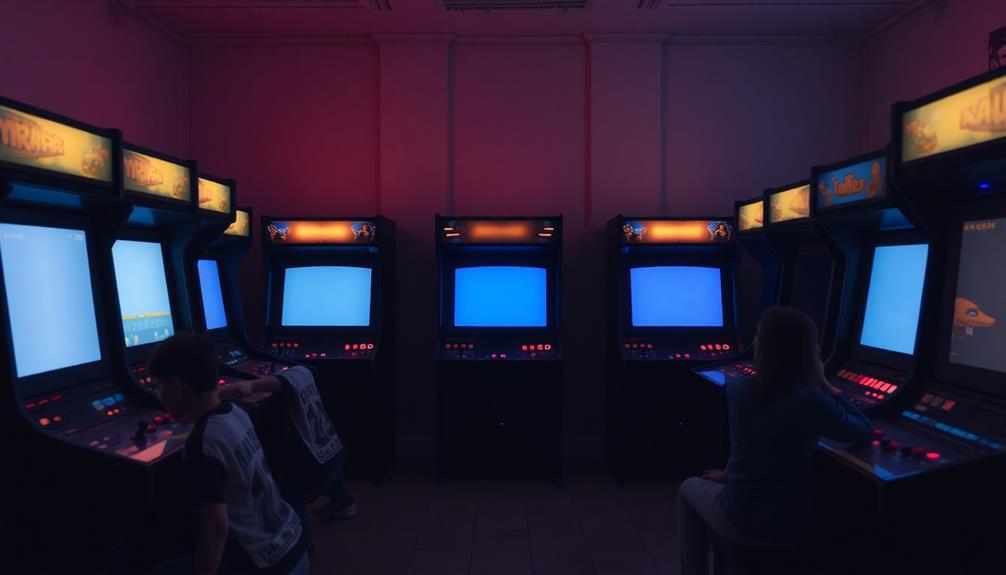
How often have you walked into an arcade only to be disappointed by the limited game selection? You might find yourself facing a row of arcade machines that primarily feature popular classics, leaving you with limited player choices.
Unlike home consoles, which offer a vast library of games across various genres, arcades often focus on a narrow range of titles. This lack of variety can be frustrating, especially if you're in the mood for something different. In many ways, this situation mirrors the limited options in outdoor survival scenarios, where adaptable skills are critical, as seen in the importance of primitive weapons for modern survival.
Many machines cater to specific gameplay styles, like fighting or shooting, which means you mightn't find the diverse experiences you're craving. If your local arcade doesn't have what you're looking for, your options become even more restricted.
The geographic limitation of arcades often prevents you from accessing unique or niche games unless you're willing to visit multiple venues.
Additionally, the pay-per-play model can further discourage you from exploring unfamiliar titles. You might stick to what you know, maximizing your investment in games you've already played.
Ultimately, this combination of limited game selection and the nature of arcade gaming can diminish your overall experience.
Time Constraints and Accessibility

Limited game selection isn't the only drawback of arcade gaming; time constraints and accessibility issues can greatly affect your experience as well. When you visit an arcade, you often face a pay-per-play model that requires you to insert coins for each session. This setup places strict time constraints on your gameplay, limiting how long you can enjoy a game unless you keep feeding it with money.
In some cases, the atmosphere of the arcade can enhance the experience, creating a vibrant social environment similar to that found in New England's diverse camping locations, which also attract outdoor enthusiasts.
Additionally, arcades usually have limited hours of operation, which can restrict access, forcing you to plan your gaming sessions around those hours. If you're busy or if an arcade is closed, you lose out on spontaneous gaming opportunities.
Geographic limitations can also be a hurdle. If you live in a rural or less populated area, finding a nearby arcade can be challenging. The need to travel to an arcade venue can deter you from regular gameplay, especially if you struggle with transportation.
These factors combined mean that the accessibility of arcade gaming is often less than ideal, making it difficult to fully engage with the hobby you love.
Social Interaction Limitations

Arcade games, while offering a fun and nostalgic experience, often limit social interaction in several ways. Primarily, they support local multiplayer, which means your social gaming is restricted to those physically present. Unlike modern gaming platforms that let you connect with friends or players globally, arcade experiences can feel isolating.
The pay-per-play model adds another layer of limitation; you might feel pressured to shorten your gaming sessions to avoid excessive costs, curtailing opportunities for extended social interaction. Additionally, the environment in which arcade games are played can affect emotional and psychological growth, as social interactions in these settings are often brief and competitive rather than collaborative, reminiscent of the key domains of development in psychology.
Moreover, many arcade venues have limited operating hours, further restricting when you can enjoy games with your friends. The physical space in these venues can also lead to overcrowding, making it tough to find a comfortable spot to hang out and play together.
Additionally, the focus on competitive gameplay can create a less collaborative environment, which hinders the development of social bonds. Rather than fostering teamwork and camaraderie, arcade games often pit players against each other, making it difficult to build lasting friendships compared to cooperative gaming experiences.
Hardware and Graphics Restrictions

While social interactions in arcade settings can be constrained, the gaming experience itself is also hampered by considerable hardware and graphics restrictions. Arcade games are often limited by the hardware capabilities of the machines, which means they can't match the complexity and depth found in modern consoles and PCs. This lack of technological advancement can hinder the gaming experience, similar to how budgeting is essential for financial health.
You'll notice that the graphics on arcade machines typically rely on basic 2D visuals or early 3D graphics, falling short of the high-definition standards we expect today.
Another issue is that many arcade games come with fixed hardware configurations. This makes upgrades for better performance or enhanced graphics impossible unless you replace the entire machine. The limited screen size and resolution of arcade displays can further hinder your immersive experience, especially when you compare that to the larger screens and superior resolutions available for home gaming setups.
Lastly, the simplistic control systems—often just buttons and joysticks—restrict the range of gameplay mechanics. This limitation can leave you wanting more variety and depth that modern gaming systems easily provide.
Frequently Asked Questions
Are Arcade Games Good for Your Brain?
Arcade games can be good for your brain, enhancing cognitive skills like quick thinking and problem-solving. They improve hand-eye coordination and memory, while the social aspect promotes teamwork and emotional intelligence in multiplayer experiences. In addition, the fast-paced nature of arcade games can help improve reaction times and decision-making abilities. The benefits of arcade gaming extend beyond just entertainment, as they can also have a positive impact on overall mental agility and resilience. Overall, arcade games offer a well-rounded cognitive workout that can benefit individuals of all ages.
Why Were Arcades Banned?
Arcades were banned due to concerns about gambling, crime, and addiction among minors. Local governments worried about violent games exposing children to graphic content, prompting restrictions to protect youth and maintain community safety.
What Are Advantages and Disadvantages of Games?
When you plunge into gaming, it's like opening a treasure chest. You'll find advantages like social interaction and thrilling experiences, but you might also face disadvantages like costs and limited accessibility that can dampen your enthusiasm.
What Are the Disadvantages of Serious Games?
When considering serious games, you might find they require hefty investments, struggle to balance fun and learning, risk overwhelming players, lack social interaction, and vary in effectiveness based on your engagement and motivation.
Conclusion
In the world of arcade games, while the flashing lights and sounds pull you in, the drawbacks can dim the excitement. You might find yourself spending more than you planned, with a limited selection that grows stale. Time flies when you're having fun, yet those constraints can leave you wanting more. Plus, the social interaction can feel lacking, and the hardware often can't compete with today's graphics. In the end, it's a mix of highs and lows that keep you coming back.

